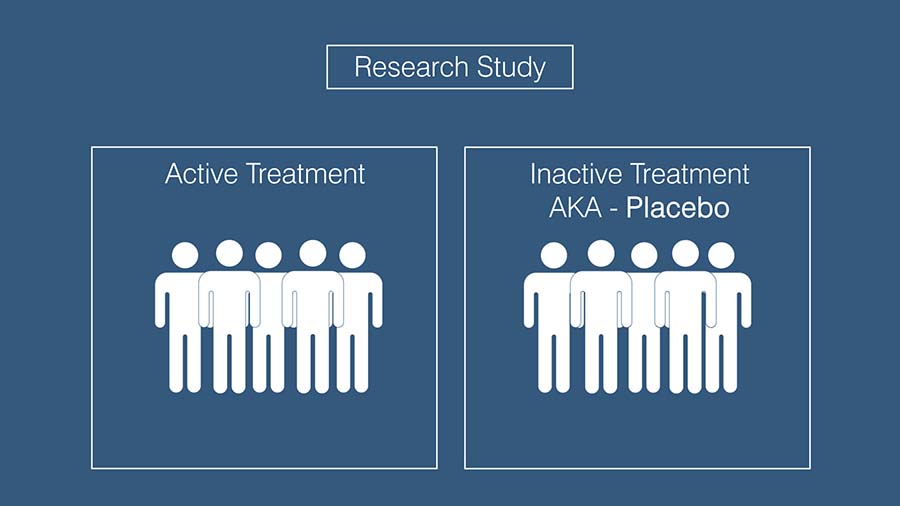Placebo vs Nocebo Effect
What is the “Placebo Effect”? The placebo effect refers to a phenomenon that occurs when patients show an improvement in their condition upon receiving treatment designed to have no therapeutic benefit. It’s also known as the “Sugar Pill Effect”.

In research trials, an active treatment is tested on a group of subjects, and then a similar but inactive treatment is given to another group. This ineffective alternative is called the placebo. By comparing the results of both groups, researchers can determine if there is a benefit from the active treatment.
We know that the placebo effect is a real phenomenon, as a certain percentage of people do report improvements, even when given a supposedly ineffective treatment. Many treatments are designed to reduce pain. As it turns out, the psychology of pain can play an important role in improving a patient’s condition.
This is why, traditionally, treatments are only considered effective if they produce a greater effect than their placebo counterpart.
But you don’t have to be in a lab setting to witness the placebo effect on pain. In fact, I see it occur almost every day.

Think about it. When you are in a good mood, you are less likely to notice and complain about any pain you are in.
When you trust your doctor, the prescribed treatment is likely to work better than it would if you doubted your doctor.
You can see how having a more positive outlook often results in greater improvements.
Unfortunately, researchers have also observed a similar but more concerning phenomenon known as the Nocebo Effect.
Whereas Placebo comes from the Latin root ‘Placere’, which means “I will please”, Nocebo comes from the Latin root ‘Nocere’, which means “I will harm”. In the case of the nocebo effect, the subject’s condition worsens due to a negative perception of the given treatment. It is the result of a self-fulfilling prophecy.
The psychological component of pain makes the placebo and nocebo effects more noticeable than in other conditions.

Basically, this is the difference between Optimism and Pessimism. Although given the same treatment, patients who believe the treatment is beneficial tend to have better results. Of course, placebos are not a cure-all.
What does this mean for you? Well, by taking responsibility, you can make the most of your situation and take a more active role in your own care. This willingness to take an active role may be more rewarding than you think. In essence, you can create your own placebo effect.
I strongly recommend surrounding yourself with people who support you throughout this process. Whether it’s friends, family, or even health professionals, they should encourage you to have a positive mindset and want to see you improve.
Be wary of anyone who might attempt to take advantage of you and your pain. Whether it’s intentional or not, people often project themselves onto others — and this may not be to your benefit. In fact, it’s usually the opposite.
Ultimately though, the ball is in your court. You determine what’s best for yourself. You decide whether to change your mindset or your lifestyle.
By recognizing you still have some control over your outcome, you can use the placebo effect to your advantage. Stay motivated and maintain a positive outlook: do what’s best for your well-being.
Don’t let your anger and frustration over your current situation prevent you from getting better. Focus on what you can do to actively participate in your own care.
Become a placebo positive person. Avoid being a nocebo negative person.
I hope you gain the confidence to do what’s best for yourself.
Last modified: September 26, 2020










i want to ask …I heard people say degeneratif disk can not be cure…true or false?
It is part of aging. It is something you must accept. https://youtu.be/_OWB84wL8gE